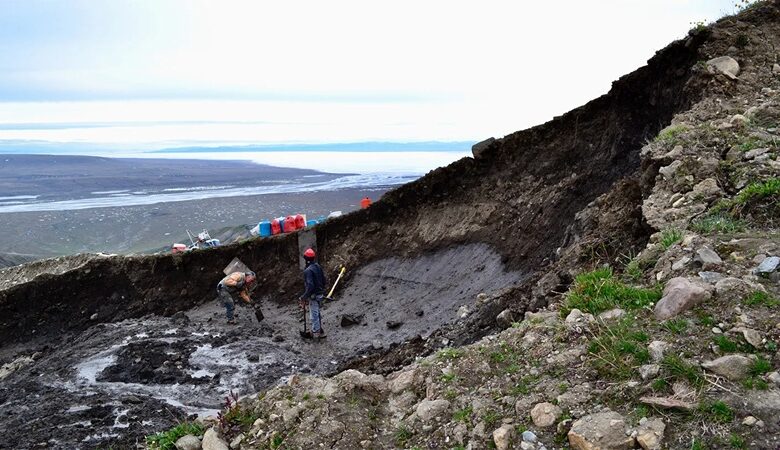Unearthed ice may be the Arctic’s oldest buried glacier remnant
News Mania Desk \ Piyal Chatterjee \ 23rd january 2025

On a distant island in the Canadian Arctic, scientists have found the remnants of a prehistoric glacier that might be more than a million years old. Researchers report in the January 1 Geology that this discovery could be the oldest glacier ice ever located under permafrost — soil that has remained frozen for a minimum of 2 consecutive years — in the Arctic. For scientists eager to investigate the glacier, time is running out, as anthropogenic climate change has revealed the historically shielded ice to thawing.
Similar to entries in a logbook, the gas bubbles, compounds, and particles embedded in a glacier’s frozen layers can provide insights into the atmospheres and climates of ancient millennia. However, there are very few accounts of ice that predates the last significant expansion of the ice sheets, which occurred 26,000 to 20,000 years ago. The newly discovered ice may offer scientists a unique opportunity to examine the climate of the early Pleistocene epoch, a time when the Earth experienced intermittent ice ages interspersed with warmer intervals called interglacial periods. “These [Pleistocene climate changes] serve as parallels for what we might observe in the future,” states geomorphologist Daniel Fortier from the University of Montreal.
In 2009, Fortier and his team were examining a buried fossilized forest on Bylot Island, located in Canada’s Nunavut Territory, when they unexpectedly found sites of recent landslides caused by permafrost thaw. The slides revealed transparent, stacked ice formations that were located a few meters beneath the surface, right above the fossilized forest. To Fortier’s astonishment, radiocarbon dating of organic material in the ice showed it to be more than 60,000 years old. “I definitely didn’t see that coming,” he states.
Additionally, in the sediment layers above the ice, the researchers found a change in the orientation of magnetic minerals that matched a reversal of Earth’s magnetic field approximately 770,000 years ago, suggesting that the ice is at least that old. Prior studies had determined that the fossil forest supporting the glacier dated back to between 2.8 and 2.4 million years ago, suggesting a maximum potential age for the ice.
Fortier states that the finding reflects the strength of permafrost. Although climate forecasts indicate that permafrost will entirely melt in several areas by century’s end, he points out that this preserved glacier has survived interglacial phases that were warmer than the present. “I believe permafrost won’t vanish that quickly.” “The system is stronger than we realize.”






